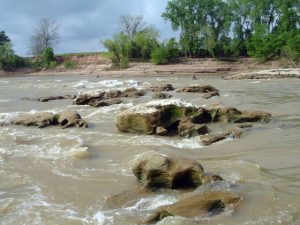From an article published by Arizona Department of Water Resources, 2016
The Purple Pipe
The pipes through which re-used water – that is, treated water that often has worked its way through a community’s sewage system – flows are purple. They are created an eye-catching purple for a reason. You can guess what that reason is. No one wants to mistake the “purple pipe” water for drinking water. Ever!
Re-used water goes by a lot of names. Effluent or sewage, for starters. For another, “direct (or indirect) potable re-use” water, after it has gone through elaborate cleaning and filtration processes.
But one name by which it is widely known – wastewater – may be due for word-retirement. In an era of drought, especially in the always arid Southwest, there is just no such thing as water that should be earmarked as “waste.”
It is the gathering consensus of water experts throughout the Southwest: that re-used water can and should play an important part in the region’s water-availability mix. No water should be “wasted,” and the so-called wastewater flowing through those distinctive purple pipes has an important role to play as communities strive to bolster their water supplies and eliminate direct discharge into our streams.
Arizona communities have a long-standing commitment to reusing their water supplies at least once. Big cities like Phoenix and Tucson re-use virtually their entire water supply, which explains why Arizona has the highest rate of water re-use per capita of any state in the Union except Florida.
The Arizona Governor’s Water Augmentation Council (AGWAC) is aiding in the consideration process for amending state rules to allow for potable re-use. At its most recent meeting on Oct. 28, GWAC members formed a reclaimed water committee, to be chaired by John Kmiec, utilities director of Marana Water, that will examine ways to create statewide standards for reusing so-called wastewater.
Those standards may include standards for potable water reuse. Which is to say, human consumption, which currently is prohibited.
There is no getting around the fact that water designated for “direct potable reuse” is a tough sell to the public… even though it shouldn’t be.
Modern water treatment is a highly refined and multi-level process.
As one of the nation’s premier experts on the subject, Chuck Graf of the Arizona Department of Environmental Quality, told the AGWAC members, of Arizona’s 98 largest permitted water-treatment plants, 93 percent of them distribute reclaimed water for re-use or recharge – and 56 percent of them distribute high-grade (known as Class A+) re-use water from that mix.
Overall, according to Graf, Arizona water-treatment facilities are producing some of the best-quality reclaimed water in the country.
As illustrated by Graf and others, the goal of “mixing” reclaimed water into the water supply doesn’t necessarily mean refining it to drinking-water quality. It also means expanding its range of uses beyond just irrigating golf courses.
Graf cited existing examples, such as its use in Flagstaff in the production of recycled paper products, and in Chandler for semiconductor fabrication at the Intel Ocotillo Campus.
In its most refined state, of course, “wastewater” can be used for “direct potable reuse.” That is, as drinking water – presuming the state opts to remove its existing prohibitions of potable reuse of water.
The push to re-use wastewater many times over is raising some interesting questions about water-quality standards. Basically, the money question is: Should all water used by humans be treated to drinking-water standards?
As we’ve evolved as society, we tend to take all the highest quality sources we can find and shove it all through highly technical water treatment plants,” said Guy Carpenter, president of the National WateReuse Association.
Carpenter recently discussed the evolving nature of re-used water during a Southern Arizona water issues meeting in Tucson. His presentation on matching water-quality standards to water uses wowed the crowd of water-wonks.
“We deliver all of that water for all of our uses. And it’s all drinking water quality, yet less than one percent of it is for drinking water. Most of it is for fire flows and filling swimming pools and irrigating our landscaping.
“It doesn’t need to be drinking-water quality to do that,” said Carpenter.

